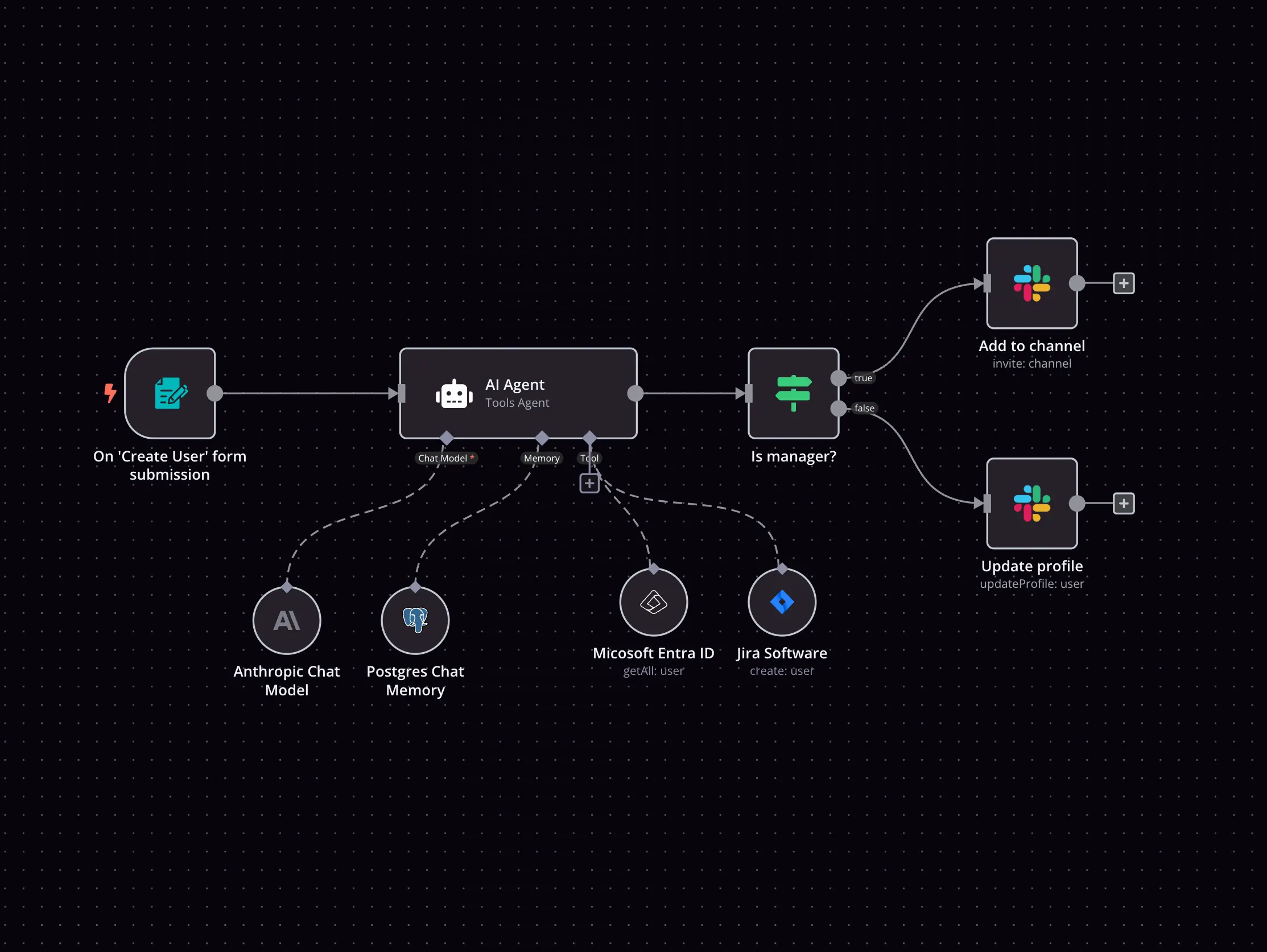ConfigCat and Spydra integration


How to connect ConfigCat and Spydra
Create a new workflow and add the first step
In n8n, click the "Add workflow" button in the Workflows tab to create a new workflow. Add the starting point – a trigger on when your workflow should run: an app event, a schedule, a webhook call, another workflow, an AI chat, or a manual trigger. Sometimes, the HTTP Request node might already serve as your starting point.
Build your own ConfigCat and Spydra integration
Create custom ConfigCat and Spydra workflows by choosing triggers and actions. Nodes come with global operations and settings, as well as app-specific parameters that can be configured. You can also use the HTTP Request node to query data from any app or service with a REST API.
Supported API Endpoints for ConfigCat
Create feature flag
Creates a new feature flag in ConfigCat.
Create config
Creates a new config in ConfigCat.
Get values
This endpoint returns all Feature Flag and Setting values of a Config identified by the configId parameter in a specified Environment identified by the environmentId parameter.
Post values
This endpoint batch updates the Feature Flags and Settings of a Config identified by the configId parameter in a specified Environment identified by the environmentId parameter.
Create environment
Creates a new environment in ConfigCat.
Create product
Creates a new product in ConfigCat.
List members
Retrieves a list of all members in ConfigCat.
Get setting value
This endpoint returns the value of a Feature Flag or Setting in a specified Environment identified by the `environmentId` parameter.
Get multiple setting values
This endpoint retrieves the values of multiple Feature Flags or Settings in a specified Environment.
Get value
This endpoint returns the value of a Feature Flag or Setting in a specified Environment identified by the SDK key.
To set up ConfigCat integration, add the HTTP Request node to your workflow canvas and authenticate it using a generic authentication method. The HTTP Request node makes custom API calls to ConfigCat to query the data you need using the API endpoint URLs you provide.
See the example hereThese API endpoints were generated using n8n
n8n AI workflow transforms web scraping into an intelligent, AI-powered knowledge extraction system that uses vector embeddings to semantically analyze, chunk, store, and retrieve the most relevant API documentation from web pages. Remember to check the ConfigCat official documentation to get a full list of all API endpoints and verify the scraped ones!
Supported API Endpoints for Spydra
Create organization
Creates a new organization.
Edit organization details
Edits the details of an existing organization.
Delete organization
Deletes an existing organization.
Create a network
Creates a new network.
Delete network
Deletes an existing network.
Deploy app
Deploys a new application.
Create channel
Creates a new channel.
Remove channel
Removes an existing channel.
Create node
Creates a new node.
Delete node
Deletes an existing node.
Create oracle
Creates a new oracle.
To set up Spydra integration, add the HTTP Request node to your workflow canvas and authenticate it using a generic authentication method. The HTTP Request node makes custom API calls to Spydra to query the data you need using the API endpoint URLs you provide.
See the example hereThese API endpoints were generated using n8n
n8n AI workflow transforms web scraping into an intelligent, AI-powered knowledge extraction system that uses vector embeddings to semantically analyze, chunk, store, and retrieve the most relevant API documentation from web pages. Remember to check the Spydra official documentation to get a full list of all API endpoints and verify the scraped ones!
ConfigCat and Spydra integration details
FAQ
Can ConfigCat connect with Spydra?
Can I use ConfigCat’s API with n8n?
Can I use Spydra’s API with n8n?
Is n8n secure for integrating ConfigCat and Spydra?
How to get started with ConfigCat and Spydra integration in n8n.io?
Looking to integrate ConfigCat and Spydra in your company?
The world's most popular workflow automation platform for technical teams including
Why use n8n to integrate ConfigCat with Spydra
Build complex workflows, really fast


